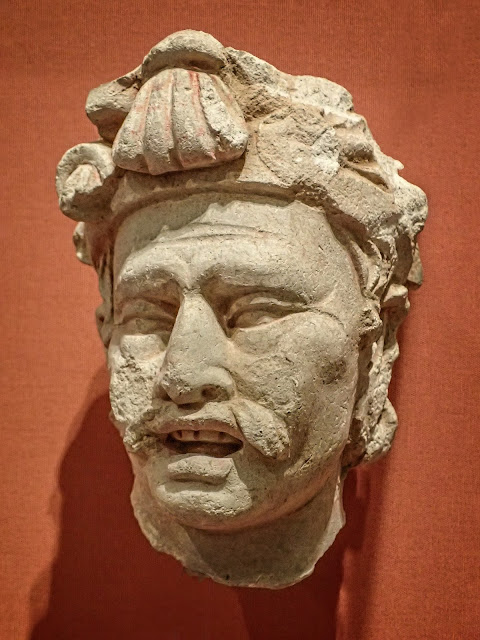Buddhist sculpture of the 4th and 5th centuries CE
Buddhist monuments of the 4th and 5th century CE were decorated with elaborate scenes in stucco. The heads were sometimes made separately and pegged in place, so they often became detached. This Head may be Kuvera or possibly a warrior belonging to the army of the evil god Mara, a demonic celestial king who tempted Prince Siddhartha (Gautama Buddha) by trying to seduce him with the vision of beautiful women who, in various legends, are often said to be Mara's daughters. In Buddhist cosmology, Mara is associated with death, rebirth and desire. Modeled of lime composition, this sculpture reflecting Hellenistic influence introduced into the region by Alexander the Great, was found in Hadda, Afghanistan and is part of the collections of the Victoria and Albert Museum in London that I photographed in 2016.




Comments
Post a Comment